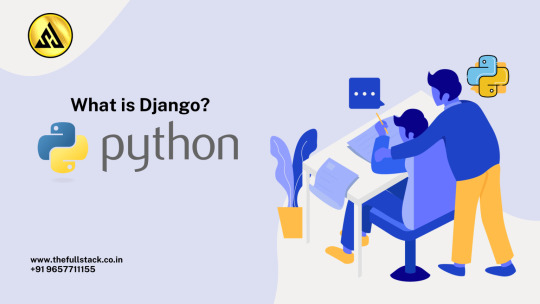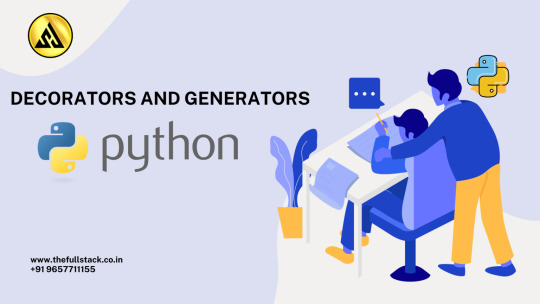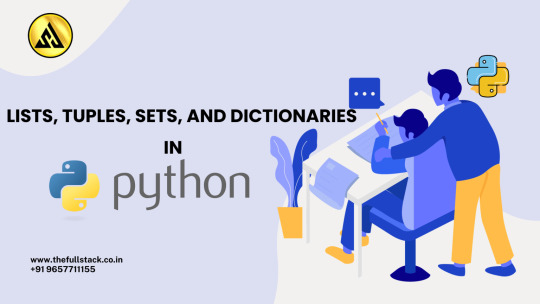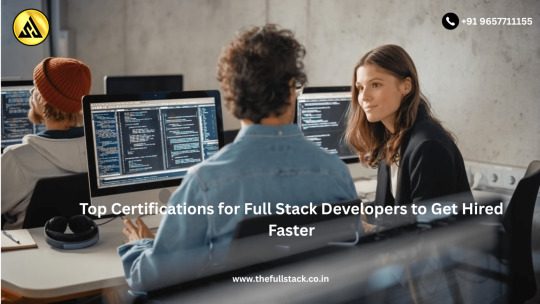Don't wanna be here? Send us removal request.
Text
What is Django? A Complete Guide for Beginners

Django is a high-level Python web framework that enables rapid development of secure and maintainable websites. It follows the model-template-view (MTV) architectural pattern and encourages clean, pragmatic design. Popular among developers for its scalability, reusability, and simplicity, Django helps build full-stack web applications with minimal code. Designed to handle backend logic, database interactions, URL routing, and more, Django is ideal for both startups and enterprise-level projects. If you're looking to learn web development in 2025, Django is one of the top Python frameworks for beginners, thanks to its rich documentation, strong community support, and compatibility with modern tools like REST APIs, PostgreSQL, and frontend libraries like React
0 notes
Text
Calculator in SAP using New ABAP Syntax

Create a simple calculator in SAP using the latest ABAP 7.4 and 7.5 syntax, designed for modern SAP S/4HANA development. This tutorial demonstrates how to use inline declarations, the VALUE, COND, and CASE expressions, and efficient data handling techniques to build a clean and optimized arithmetic calculator. Ideal for SAP ABAP beginners and professionals looking to upgrade their skills, this guide helps you understand how to write concise, readable, and performance-driven ABAP code using new syntax features. Learn step-by-step how to implement addition, subtraction, multiplication, and division using best practices in ABAP programming. Perfect for those preparing for technical interviews, SAP projects, or wanting to practice functional coding in SAP NetWeaver.
0 notes
Text
Working with Databases: SQLite and SQLAlchemy

Working with Databases: SQLite and SQLAlchemy is a crucial skill in modern application development, especially in data-driven projects. SQLite is a lightweight, serverless, self-contained SQL database engine widely used in mobile apps, desktop software, and small to medium-sized web applications. It requires minimal setup and offers excellent performance for local storage needs.
SQLAlchemy, on the other hand, is a powerful Python ORM (Object Relational Mapper) that allows developers to interact with databases using Pythonic code instead of raw SQL. It supports both high-level ORM queries and low-level SQL expressions, making it a preferred choice for scalable and maintainable applications.
Using SQLAlchemy with SQLite allows for seamless database integration, automatic table creation, and efficient data manipulation. Developers can benefit from features like data model abstraction, query optimization, and easy migration handling. This combination is ideal for beginners and professionals alike who are building Python-based backend systems, APIs, or full-stack applications.
0 notes
Text
Hello SAP EhP7 !!

Hello SAP EhP7 — your gateway to enhanced enterprise performance! SAP Enhancement Package 7 (EhP7) for SAP ERP 6.0 offers a strategic upgrade path packed with new functionalities without the need for a full system upgrade. It supports seamless business process improvements, optimized user experiences with SAP Fiori integration, and advanced capabilities in finance, logistics, and HR. EhP7 helps organizations stay agile, reduce customization efforts, and accelerate innovation.
With support for HANA-ready features, role-based user interfaces, and improved mobile compatibility, SAP EhP7 ensures your business remains competitive in the digital age. Whether you’re planning to streamline operations or prepare for S/4HANA migration, EhP7 provides a future-proof platform that aligns with evolving business needs. Upgrade smart, stay relevant, and unlock the full potential of your ERP landscape with SAP EhP7.
0 notes
Text
How to Set Up Role Hierarchies and Sharing Rules in Salesforce

Setting up role hierarchies and sharing rules in Salesforce is a critical step in establishing a secure and scalable data access model. Role hierarchies define the levels of access within an organization, ensuring that users higher in the hierarchy can view, edit, and report on the data owned by users beneath them. Sharing rules, on the other hand, offer flexibility by enabling automatic record sharing based on criteria such as ownership or field values. Together, these configurations help organizations maintain a balance between data privacy and collaboration across departments. By leveraging Salesforce’s advanced data security model, businesses can enhance user productivity, enforce compliance, and streamline customer relationship management. Whether you’re an admin setting up a new org or optimizing an existing one, understanding these Salesforce security best practices is key for efficient CRM management.
0 notes
Text
Decorators and Generators in Python

Decorators and generators in Python are powerful features that help write clean, efficient, and scalable code. A decorator in Python is used to enhance the functionality of functions or methods without modifying their structure. It is widely used in logging, authentication, and performance testing. On the other hand, generators provide a memory-efficient way to iterate over large datasets using the yield keyword instead of return. These tools are essential in modern Python programming, especially for building APIs, handling asynchronous tasks, and managing data streams. Learning decorators and generators is crucial for anyone aiming to master advanced Python and improve code reusability and performance.
0 notes
Text
What is the Python Standard Library?

The Python Standard Library is a powerful collection of pre-installed modules and packages that provide essential tools for everyday programming tasks. It supports file handling, regular expressions, JSON manipulation, threading, networking, and even web development — all without the need for external libraries. Whether you’re building APIs, automating workflows, or working with data structures, the standard library offers a reliable and efficient foundation. It’s one of the key reasons why Python remains a top choice in trending fields like machine learning, data science, and automation. Ideal for beginners and pros alike, the standard library boosts productivity and accelerates development in real-world applications.
0 notes
Text
What Is Object-Oriented Programming in Python?

Object-oriented programming in Python is a powerful programming paradigm that focuses on creating reusable and modular code by defining classes and objects. It allows developers to structure programs using real-world entities like inheritance, encapsulation, polymorphism, and abstraction. Python supports OOP principles to promote cleaner syntax, easier debugging, and scalable development, especially in modern software engineering, machine learning projects, and web development frameworks like Django and Flask. By leveraging object-oriented design, Python developers can build efficient applications with better code maintainability and high performance, making it a top choice in today’s trending coding practices.
0 notes
Text
Python Modules and Packages: The Complete Guide with Examples

Unlock the full potential of Python programming with this complete guide to Python modules and packages. Learn how to structure your code, boost productivity, and reuse functions efficiently. This tutorial covers the differences between modules and packages, how to import them, and provides real-world examples for beginners and advanced users. Perfect for software developers, data analysts, and anyone exploring Python for machine learning, automation, or web development. Stay updated with best practices in Python 3, code organization, and modular programming.
0 notes
Text
A to Z of OLE Excel in ABAP 7.4

A to Z of OLE Excel in ABAP 7.4 — This blog is your complete guide to automating Excel operations using OLE (Object Linking and Embedding) in ABAP 7.4. Learn how to create, open, read, write, and format Excel files directly from your SAP ABAP programs without the need for external libraries. Ideal for SAP developers looking to streamline report generation and data export processes, this tutorial covers OLE Excel integration, Excel macro automation, dynamic cell updates, and advanced Excel formatting with ABAP. Whether you’re building custom reports or enhancing business process automation, mastering OLE Excel in ABAP 7.4 boosts your SAP productivity and delivers powerful end-user Excel functionality.
0 notes
Text
Lists, Tuples, Sets, and Dictionaries in Python

Understanding lists, tuples, sets, and dictionaries in Python is crucial for anyone learning data structures in Python programming. These built-in collection types offer powerful ways to store, access, and manipulate data efficiently. Lists in Python are used for ordered and mutable sequences, while tuples provide an immutable alternative. Sets help manage unique data and perform operations like union and intersection, making them ideal for membership testing. Dictionaries are perfect for key-value pair storage, widely used in data science, machine learning, and web development. Mastering these core Python collections is essential for writing clean, optimized, and scalable code in 2025. Whether you’re a Python beginner or preparing for coding interviews, understanding these Python data types will give you a solid foundation. These collections are frequently used in real-world projects, from backend development to automation scripts. Practicing with real examples and coding challenges can help solidify your Python skills faster.
0 notes
Text
Loops in Python: Mastering for and while Loops with Examples

Learn how to use for loops and while loops in Python with real-time coding examples and practical explanations. This beginner-friendly Python tutorial helps you understand the core logic behind loops and how they simplify repetitive tasks in programming. Dive into Python syntax for loop creation, loop control statements like break, continue, and pass, and discover how to avoid infinite loops.
Master nested loops, loop counters, and iteration through lists, dictionaries, and strings using for-in loops. Understand how while loops work in automation and condition-based tasks. This guide is perfect for students, beginners in Python programming, and developers preparing for coding interviews or Python certification.
Explore Python loops in data analysis, web scraping, and file handling projects. With clear examples and tips, this resource will help you build efficient, scalable, and clean Python scripts. Whether you’re coding for data science, machine learning, or web development, loop mastery is a key step in your Python journey.
0 notes
Text
Python Conditional Statements: if, elif, else Explained with Examples

Unlock the power of Python programming by mastering conditional statements like if, elif, and else. These control flow tools help your code make decisions based on different conditions, allowing you to build smarter, more responsive programs. In this guide, you’ll explore how to use if statements to check single conditions, elif to test multiple scenarios, and else to define fallback logic when all other conditions fail.
Perfect for Python beginners and coding learners, this article includes real-life coding examples and practical use cases such as login authentication, grading systems, and data validations. Whether you’re preparing for coding interviews, working on a project, or exploring automation scripts, understanding Python conditions is a must-have skill.
We’ll also cover common mistakes, indentation rules, and tips to write clean and readable code. Start your journey into data science, web development, or machine learning with a strong foundation in Python logic and flow control. Make your Python skills stand out with clear logic and decision-making techniques.
0 notes
Text
Python Variables, Data Types, and Basic I/O

Mastering Python variables, data types, and basic I/O is a crucial step in becoming a successful developer or data analyst. Variables help you store and manipulate data efficiently, while understanding data types ensures you handle values like numbers, text, and boolean logic correctly. Learn the differences between mutable and immutable types, and how Python dynamically assigns data types during runtime. Dive into input handling to make your programs interactive, and practice using the input() and print() functions to build simple, functional scripts.
This foundational knowledge is essential for developing Python applications, working with APIs, automating tasks, and preparing for fields like machine learning, AI, and web development. With practical examples and beginner-friendly syntax, you’ll gain the confidence to build your own programs. Whether you’re learning Python for career growth, software development, or academic projects, understanding these basics is your first step toward writing clean and efficient code.
0 notes
Text
What is Python?

Python is a high-level, interpreted programming language widely used for web development, data science, automation, artificial intelligence, and machine learning. Known for its clean syntax and ease of learning, Python enables developers to build robust applications faster. It supports popular frameworks like Django and Flask for web apps, as well as libraries like Pandas, NumPy, and TensorFlow for data analysis and AI projects. Python’s growing demand in tech industries, along with strong community support, makes it a top choice for beginners and professionals aiming to build scalable and innovative solutions in 2025.
Thanks to its cross-platform compatibility, Python is ideal for cloud computing, API development, and backend systems. It’s a go-to language in trending domains such as data engineering, automation scripting, and blockchain development. The language’s active open-source ecosystem ensures access to thousands of packages and plugins, helping coders accelerate project delivery. Whether you’re creating a chatbot, training a deep learning model, or automating business tasks, Python remains a future-ready programming language driving digital transformation across industries.
0 notes
Text
Top Certifications for Full Stack Developers to Get Hired Faster

Explore the top certifications for full stack developers that significantly improve your chances of getting hired faster in today’s competitive tech job market. As companies seek professionals with expertise across the entire development stack, earning a recognized full stack developer certification can make your profile stand out. These certifications validate your ability to build responsive front-end interfaces, efficient back-end services, and scalable full stack applications.
In 2025, top certifications include Meta Full Stack Developer Professional Certificate, IBM Full Stack Software Developer, Google IT Automation with Python, and freeCodeCamp Full Stack Developer Certification. These courses focus on in-demand technologies such as HTML5, CSS3, JavaScript, React.js, Node.js, Express, Django, REST APIs, and MongoDB. They also cover Agile methodologies, Git, version control systems, and cloud platforms like AWS and Azure — essential skills in modern software engineering.
Most certifications are available online through platforms like Coursera, edX, and Udemy, offering flexible learning paths and hands-on projects that help build a strong portfolio. Whether you’re looking to switch careers, become a freelance developer, or land a remote full stack development job, these certifications provide practical experience and demonstrate job-readiness to employers.
By aligning your learning with the latest full stack development trends and emerging frameworks, you’ll not only boost your confidence but also gain access to roles like junior full stack developer, software engineer, web developer, and tech lead. Stay ahead in the hiring game with a full stack certification that fits your goals and enhances your skills.
0 notes
Text
What is a Database? A Complete Guide for Beginners

A database is a structured collection of data that allows easy access, management, and updating of information. In today’s data-driven world, databases are essential for everything from websites and mobile apps to enterprise software systems. This complete guide for beginners explores the basics of databases, including how they work, different types like relational and NoSQL databases, popular database management systems (DBMS) such as MySQL, PostgreSQL, Oracle, and MongoDB, and how SQL is used to interact with them. Learn how databases power modern applications, support big data and cloud computing, and are foundational in careers like data science, web development, and backend engineering. Whether you’re just starting in tech or exploring how data is stored and retrieved, this guide will give you the knowledge you need to understand database systems in 2025 and beyond.
0 notes